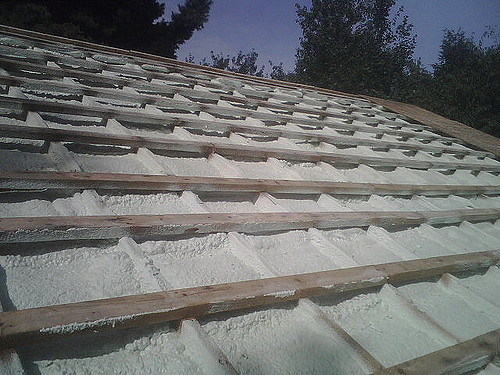Did you know the right roof can lower your energy bills? Here are your best options for saving and how they work:
Reflecting Sunlight With “Cool” Roofs
A cool roof is a general term for any rooftop that’s designed to reflect sunlight as often as possible. Sunlight is just another form of heat, and if a roof can redirect some of that radiation, less of it will make its way into your home – and you’ll spend less money on bills.
The easiest way to create a cool roof is to use white shingles. Sometimes coatings can be applied to rooftops to make them white or reflective, but this is not usually effective and can cause other problems. It is better to choose white shingles that were designed by the manufacturer specifically to save energy. Pay attention to how high the solar reflectance rate is, and how easily the roof can radiate heat back into the air (i.e. thermal emittance).

Roof Insulation and Spacing
Proper roof insulation will keep indoor heat from escaping easily. While cool rooftops can help you save on bills in the summertime, great roof insulation can help you save on bills in the wintertime. Typically, there is one layer of insulation in or near the underlayment of a roof, and another further down amidst the rafters, in the attic or crawlspace. Not only will proper insulation seal cracks and save energy, but it also helps keep pests outside! The good news is that foam insulation and other techniques can improve old insulation without requiring a full, expensive replacement.
In addition, leaving spaces in your roof can both encourage the flow of cooler air and provide you with more storage options. If you’re considering a big remodeling project, think about how roof spaces can benefit your new design.
Changing Roofing Materials
If you really want to save energy and are also thinking about replacing your rooftop, consider changing your roofing materials and taking a greener approach. For example, switching to a cooler, metal roof with better reflective properties can help you save on bills while giving your home a new, modern look. If you have a flat roof section, you can use different types of membranes with better heat-resisting properties (such as spray polyurethane) or use built-up rooftops with reflective granules.

A Roof Garden
A roof garden or “green roof” is built with plant matter (grasses and groundcovers) that grow directly into a specialized roof area. Roof gardens are more common in urban areas, but they can work well on any flat or shallow-pit rooftops. This (literally) green roof provides several benefits: It absorbs rainwater, keeps the roof cool enough to save energy, and adds extra insulation in cooler months. However, even with the right setup it can be time-consuming to install, so make sure to get a proper estimate and consider the benefits carefully.



